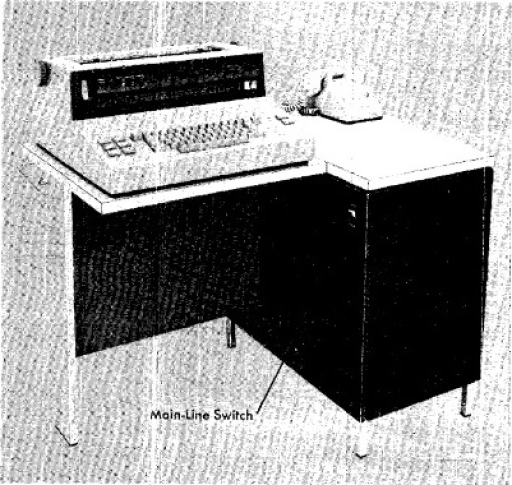IBM 1052 I/O Printer-Keyboard
- Updated
Contents
Background
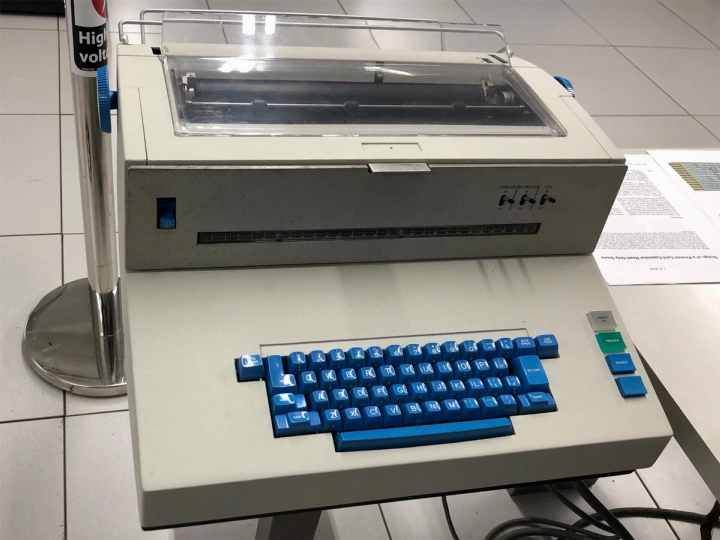
The IBM 1052 I/O Printer Keyboard was a keypunch-Selectric hybrid typewriter based printer-keyboard for the IBM 1050 Data Communications System. Released in March 1963 by IBM Data Processing Division[2], IBM 1050 was one of the earliest computer terminals and was available in various combinations but all included an IBM 1051 Central Control Unit[3]. The other IBM 1050 components included the 1053 Console Printer, 1054 Paper Tape Reader, 1055 Paper Tape Punch, 1056 Card Reader, and 1057/1058 Card Punch[%IBM1050%]. The 1050 could send and receive data to and from another 1050 terminal or an IBM 1400, 7000 or System/360 series computer[4].
| OEM(s) | IBM |
| Family | Typewriter printer-keyboard |
| First appeared | 15th March 1963[2] |
| Switches | IBM 024/026 based Keyboard Permutation Unit |
| Keycaps | Double-shot SAN |
| Connectivity | Specialised 27-line 1052 to CPU unit connection |
| Notable features | Integrated Selectric I/O typewriting printer |
Design
The IBM 1052 was made of two distinct components; a Selectric printer and a keypunch keyboard. As the name suggests, the printing mechanism is borrowed from an IBM Selectric typewriter. The printer can accept data up to rates of 15.5 characters per second. The keyboard is a modified IBM 024/026 Card Punch keyboard assembly known as a "Keyboard Permutation Unit". Unlike traditional Selectric typewriters, the keyboard is connected to the printing mechanism electrically instead of mechanically. The connection is facilitated by a console control unit, which also allows both components to operate independently. Each key generates a binary-coded decimal and is outputted in IBM paper tape and transmission code format in odd parity[5].
Connectivity
The IBM 1052 connects to its host CPU unit via a 27-line connection that allows the CPU to control the Selectric typewriting printer and sense binary-coded decimal (BCD) coding from the Keyboard Permutation Unit.
| Line | Direction | Function |
|---|---|---|
| T1 | CPU to 1052 | Selectric typing element tilt control energiser |
| T2 | CPU to 1052 | Selectric typing element tilt control energiser |
| R1 | CPU to 1052 | Selectric typing element rotate control energiser |
| R2 | CPU to 1052 | Selectric typing element rotate control energiser |
| R2A | CPU to 1052 | Selectric typing element rotate control energiser |
| R5 | CPU to 1052 | Selectric typing element rotate control energiser |
| Cycle Clutch | CPU to 1052 | Selectric cutch magnet cycle energiser |
| Space | CPU to 1052 | Selectric space function magnet energiser |
| Carrier Return-Line Feed | CPU to 1052 | |
| Upper Case Shift | CPU to 1052 | |
| Lower Case Shift | CPU to 1052 | |
| Lock Keyboard | CPU to 1052 |
1052a
The IBM 1052a (pictured above) had an off-white coloured faceplate[6]. An example of this keyboard is housed at Living Computers: Museum + Labs in Seattle, Washington. It featured one bank of 1x4 buttons on the right side of the alphanumeric keys and featured 3 toggle switches on its switch panel. Feature-wise, 1052a is very similar if not the same as 1052-6.
1052-3
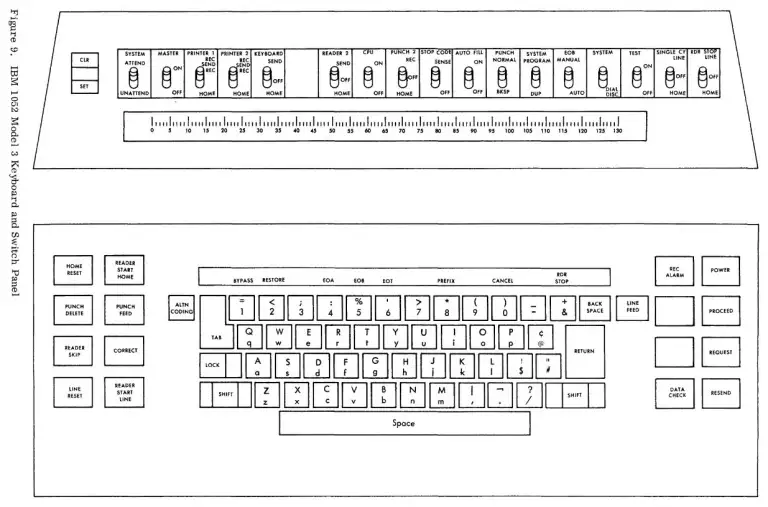
The IBM 1052 Model 3 was available for use with IBM System/360 Model 30s when an IBM 1051 Model 1 Central Control Unit is used in the console configuration. It featured two banks of 2x4 buttons on either side of the alphanumeric keys and featured 17 toggle switches on its switch panel[7].
1052-5
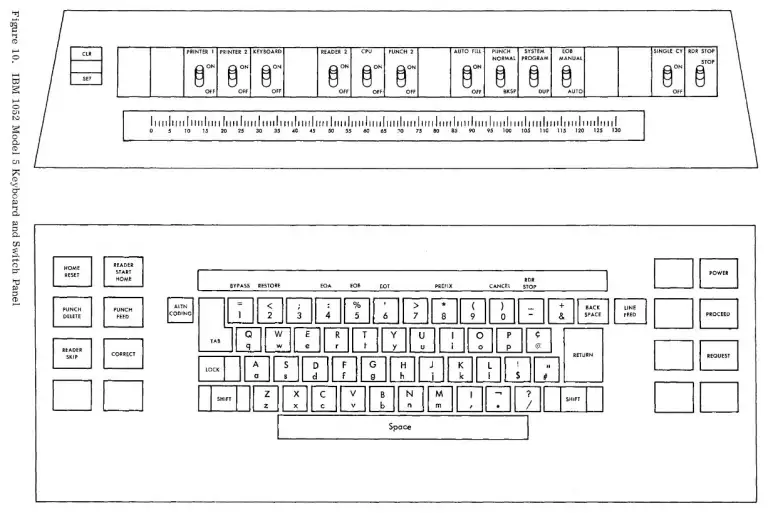
The IBM 1052 Model 5 was available for use with IBM System/360 Model 30s with an IBM 1051 Model N1 Central Control Unit when 1050 I/O components or features requiring switches (in addition to the basic 1052 Printer-Keyboard) are used in the system. It featured two banks of 2x4 buttons on either side of the alphanumeric keys and featured 12 toggle switches on its switch panel[7].
1052-6
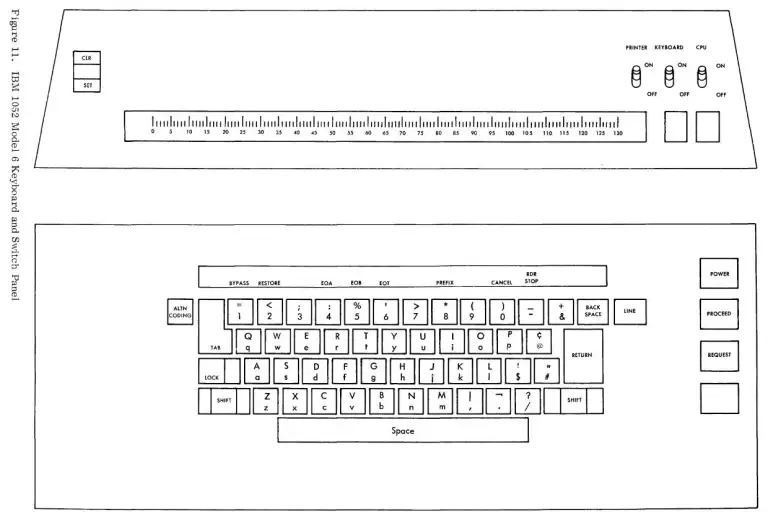
The IBM 1052 Model 6 was available for use with IBM System/360 Model 30s with an IBM 1051 Model N1 Central Control Unit when additional toggle switches beyond basic 1052 control were not needed. It featured one bank of 1x4 buttons on the right side of the alphanumeric keys and featured 3 toggle switches on its switch panel[7]. Feature-wise, 1052-6 is very similar if not the same as 1052a.
1052-7
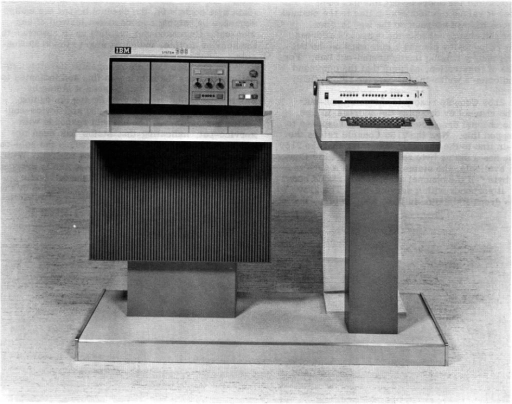
The IBM 1052 Model 7 seems to be an evolution of the 1052 specifically for the IBM 2150 Console for the IBM System/360. It featured one bank of 1x4 buttons on the right side of the alphanumeric keys and featured 19 toggle switches on its faceplate.
1052-8
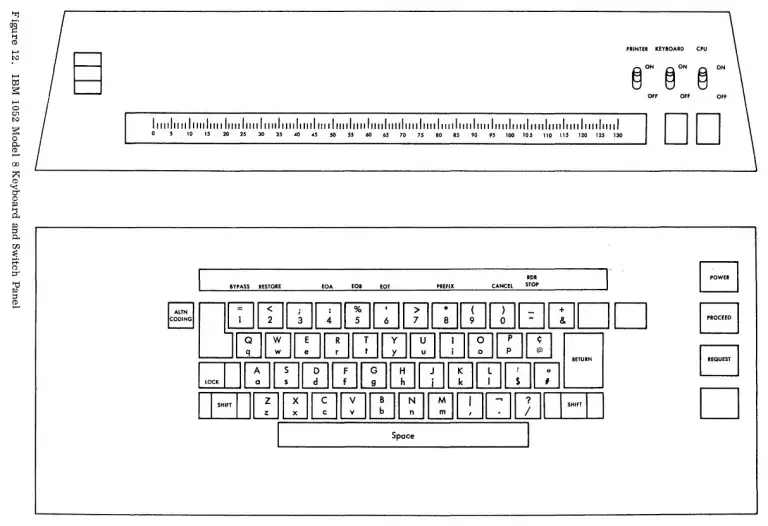
The IBM 1052 Model 8 was was available for use with IBM System/360 Model 30s with an IBM 1051 Model N1 Central Control Unit. It replaced 1052-6 as the standard console keyboard for the Model 30. It too featured one bank of 1x4 buttons on the right side of the alphanumeric keys and featured 3 toggle switches on its switch panel. However, compared to 1052-6, 1052-8 lacks Tab, Backspace and Line-feed functionality and its CLR/SET toggle switch is also unmarked[7].
Unclassified 1052 variant
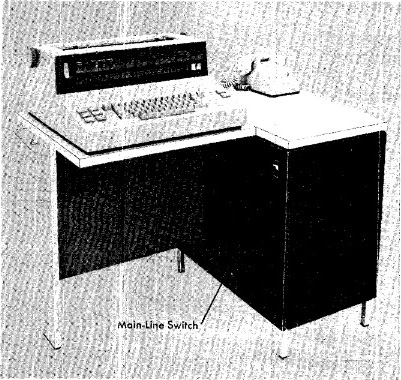
This variant has a black coloured faceplate, a larger switch on the left of the faceplate, and several more toggle switches.
- ComputerGeek7066 - File:IBM 1052.jpg [accessed 2022-09-05]. License/note: CC BY-SA 4.0 (cropped).
- IBM - DPD chronology page 2 [accessed 2023-06-22].
- Universiteit van Amsterdam - IBM 1050 Data Communications System [accessed 2021-07-09].
- Wikipedia - IBM 1050 [accessed 2021-07-09].
- IBM - IBM Field Engineering 1052 Adapter and 2150 Console Theory of Operation (#SY22-2909-2) [accessed 2022-09-05].
- NFR Partners - System 360 mod 30 [accessed 2021-07-09].
- IBM - IBM System/360 Model 30 Operating Guide [accessed 2022-01-27].
- IBM - IBM 1050 Data Communication System System Operation Reference Manual [accessed 2021-07-09].
| Published | Comment |
|---|
